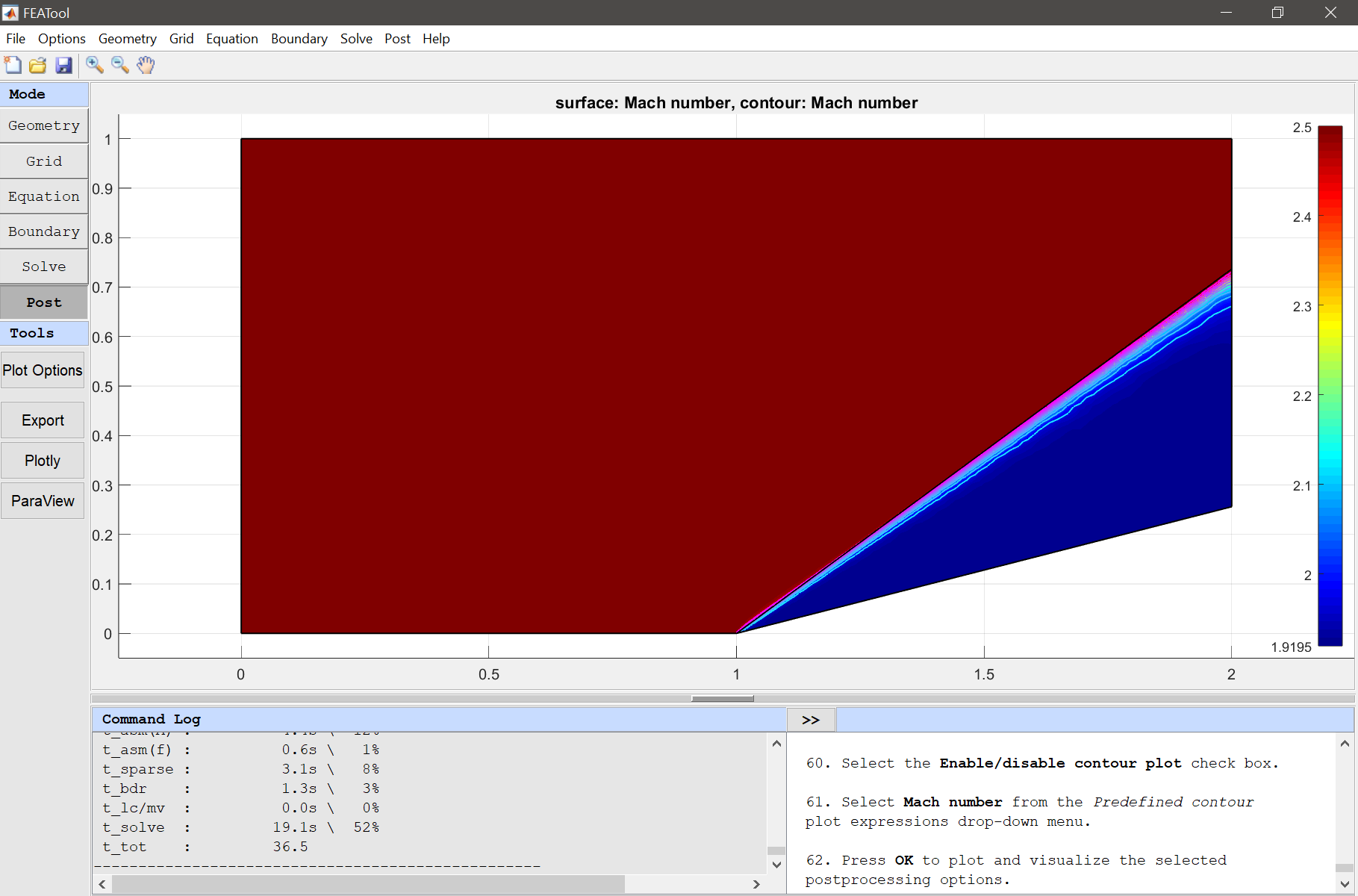This verification test case studies steady inviscid compressible flow past a wedge at an incident angle of 15 degrees. As the supersonic flow (Ma = 2.5) hits the wedge a sharp oblique shock wave is formed, resulting in a reduced downstream flow velocity. The simulation uses the inviscid compressible Euler equations to model the flow, adaptively refining the mesh, and using FEM-TVD upwinding to stabilize the solution and resolve shock discontinuities [1].
The angle of the shock wave and downstream Mach number can be determined using oblique shock theory, _Ma = 1.873526 at an angle of 36.9449 degrees, and also comparing to results from the NASA/NPARC CFD Verification and Validation Database and from the Wind-US CFD code [2].
This model is available as an automated tutorial by selecting Model Examples and Tutorials… > Fluid Dynamics > Supersonic Flow Past a Wedge from the File menu, and also as the MATLAB simulation m-script example ex_compressibleeuler6. Step-by-step tutorial instructions to set up and run this model are linked below.

References
[1] D. Kuzmin, High-resolution FEM-TVD schemes based on a fully multidimensional flux limiter, Journal of Computational Physics, vol. 198, pp. 131-158, 2004.
[2] NPARC Alliance, Computational Fluid Dynamics (CFD) Verification and Validation Web Site: https://www.grc.nasa.gov/WWW/wind/valid/wedge/wedge.html
